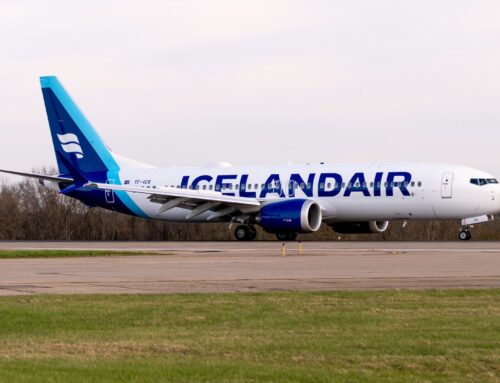Amid Growing Demand, Allegiant Adds New Fla. Route
New nonstop service to Melbourne, Fla. is first-ever for Pittsburgh
By Evan Dougherty
Published July 2, 2021
Read Time: 3 mins
Come wintertime, when cold weather sets in, Pittsburgh travelers will have yet another option to get to warm, sunny Florida.
Last week, Allegiant Air announced that it will start nonstop, year-round service between PIT and Melbourne Orlando International Airport on the state’s east coast. Nonstop flights will start on Nov. 11, operating on Sundays and Thursdays.
It will mark the first time the two airports have been linked with scheduled nonstop service. Melbourne is the 18th city Allegiant will serve from its growing Pittsburgh network, including five new routes announced this year.
“Allegiant is a great partner and is continuing to invest in the Pittsburgh community,” said Bryan Dietz, vice president, Air Service Development at PIT. “As the industry recovers, this is another testament to the strength of our market.”
The addition of Melbourne comes after Allegiant began nonstop service to Key West, Fla. and Norfolk, Va., in June. Additionally, the airline will commence direct flights from PIT to Rapid City, Iowa and Phoenix/Mesa, Ariz. in August.
Melbourne marks the 15th Florida airport served from PIT on seven different carriers.
Pittsburgh-Melbourne is one of 23 routes Allegiant added last week in a network-wide expansion as the airline gears up for fall and winter travel, targeting leisure travelers looking to visit sun destinations.
The leisure travel segment has primarily driven the increase in demand for airlines in recent months as the industry recovers from the COVID-19 pandemic. As of July 1, industry group Airlines for America reported that U.S. passenger volumes are still nearly 20 percent below pre-pandemic levels. Domestic air travel is down 17 percent while international travel is down 45 percent.
Rising passenger volumes are leading to fuller flights. Currently, the weekly average domestic load factor for U.S. flights is 89.2 percent – only one percentage point lower than the same period in 2019.
TSA data also reflects the rapid recovery in air travel. On June 11, the agency recorded more than 2 million passengers passing through checkpoints nationwide for the first time since the start of the pandemic.

Allegiant’s third quarter capacity is expected to be up 21.7 percent versus the same period in 2019. (Photo by Evan Dougherty)
Passenger numbers, however, are not the only indicators that the industry is roaring back. Airlines are once again investing millions of dollars into fleet renewal and expansion.
Last week, legacy carrier United Airlines announced an order for 250 Boeing 737 MAX and 70 Airbus A321neo aircraft – the largest in the company’s history and of any airline in the last decade. United also expects July to be the first month since January 2020 where the company will generate a pre-tax profit, according to Reuters.
Similarly, Southwest Airlines and Alaska Airlines have placed significant aircraft orders in recent months. Southwest completed deals for 134 737 MAX jets in March and June, citing lack of aircraft for future demand. Alaska, meanwhile, ordered 13 MAX planes and 17 Embraer 175 regional jets in early May after ordering up to 68 additional 737s from Boeing in December 2020.
A growing number of airlines are expected to operate more capacity than they did prior to the pandemic. According to Airlines for America, Southwest’s capacity will be up 3.7 percent in the third quarter of 2021 versus the same period in 2019, while JetBlue will be up 2.3 percent. Both carriers join Allegiant and Spirit, who are projected to be up 21.7 percent and 16.5 percent.






